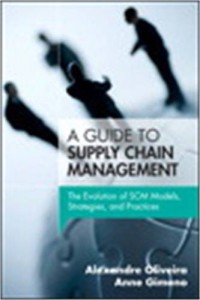Managing supply networks for innovation and competitive advantage: Concepts, models, roadmaps, and more Capture, organize, and fully utilize your #1 supply chain resource:knowledge Systematically improve strategic, tactical, and operational decision-making Improve your capabilities for managing and competing on supply networks Best-practice supply chain management transcends yesterday's functional silos. Today, it requires a comprehensive approach that recognizes supply networksas the core driver of business value. To maximize and sustain value creation in fast-changing supply networks, practitioners must properly address an even deeper issue: knowledge. In A Guide to Supply Chain Management, two pioneers in global supply chain operations explain why knowledge management is so critical to supply chain success. This comprehensive introductory guide offers powerful blueprints and models for managing both knowledge and risk in your own rapidly evolving environment. Using the new approaches described here, supply chain decision-makers can systematically achieve far higher levels of effective innovation. This innovation will help you create a ground-breaking cost-benefit environment: one that encompasses partners and alliances to establish sustainable competitive leadership. The book discusses models such as the Forrester´s Effect, the Efficient Supply Chain, Vendor managed inventory (VMI), Lean supply chain, Sales and operations planning (S&OP), Continuous replenishment program (CRP), the Agile supply chain, Efficient consumer response (ECR), Collaborative planning, forecasting and replenishment (CPFR), Responsive supply chain, Bullwhip effect, Leagile supply chain, Supply chain risk management, Integrated Business Planning (IBP), Resilient supply chain, Customer driven supply chain, Demand driven supply chain, Business Case, Adaptive supply chain, and the wise supply chain.
Guide to supply chain management, a
Sobre
Talvez você seja redirecionado para outro site












